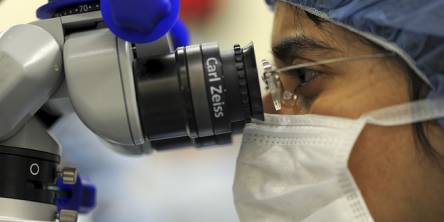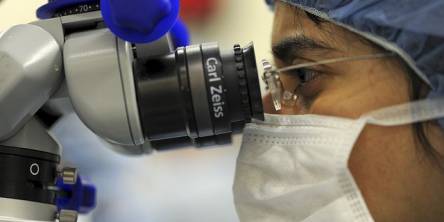Learning the Basics of Astigmatism, Symptoms and It’s Treatment
What Is Astigmatism?
Astigmatism is a condition when the refraction of eye-entering light doesn't happen equally in all directions. This happens because there are differences in the curvature of the cornea (lens of the eye), two focal points are generated from two different axes resulting in blurred distance and near vision.
This is because the light is not able to focus properly on the retina and the objects appear as hazy, wavy, blurry, particularly in the case when they are placed at a distance. Some people might be unaware of their astigmatism condition and they even might not require treatment unless it is causing unbearable discomfort to the eyes or headaches. In that case, people should immediately consult a specialist.
Why does it happen?
The people who suffer from astigmatism seem to have oval-shaped cornea instead of the normal shape of the perfect sphere. For example, a table-tennis ball is a perfect sphere while the shape of an egg is oval-shaped. This difference in curvature causes the light rays to focus on two varied points in the retina instead of one. This type of astigmatism is known as Corneal Astigmatism. Some people are born with a differently shaped cornea and some might develop later in life due to some external incident. There is no particular reason found yet as to why some people are born with differently shaped cornea causing this condition.
The other type of Astigmatism is called Lenticular Astigmatism. This type of astigmatism is similar to corneal astigmatism in terms of end result, but it differs in the reason behind it. Unlike corneal astigmatism, this one is caused by the variations in the lens curvature and not in the cornea. Due to these variations in the curvature of the lens, images reach the retina (back of the eye) improperly. It is seen that people with lenticular Astigmatism have cornea of normal shape and the issue exists only in the curve of the lens. This is found commonly in people with diabetes.
What are the symptoms?
The peculiar fact about astigmatism is that it affects the vision of a person at any distance, unlike nearsightedness or farsightedness. This sometimes makes it difficult to get diagnosed if a proper eye exam is not conducted. A more concerning fact is that the symptoms are very general and vary in severity. If these are the symptoms you or someone you know is suffering from, then you should probably get diagnosed by an eye doctor who can help determine if any symptoms are astigmatism related.
• Headaches
• Blurry vision
• Squinting needed to see clearly
• Eyestrain
• Areas of distorted vision
How is Astigmatism treated?
The treatment of astigmatism depends on the type of astigmatism and the candidacy of the patient for the treatment. Depending on these factors, different types of refractive laser eye surgeries are used to improve the condition of the eyes or correct astigmatism completely.
Femto-LASIK Treatment
The advanced version of LASIK treatment, the Femto-LASIK surgery is almost similar to the procedure of traditional LASIK. The thing which separates it is the use of an extremely precise and accurate femtosecond laser which is computer-driven and corrects refractive errors cataract, astigmatism, etc. The benefit of having femtosecond laser usage in the LASIK treatment is that it offers better stability to the cornea and works for a longer period of time.
SMILE Treatment
When we see the procedure of conventional LASIK and Femto-LASIK, the common thing between them is that they both are dependent on the creation of a corneal flap, SMILE is the flapless and minimally invasive procedure for Astigmatism’s treatment. As a technically advanced procedure, it has benefits over Femto-LASIK treatment as well. Patients who have dry eyes, intolerance to contact lens, thin corneas, or even those whose candidacy for LASIK was not approved.
Similar Articles
In today's digital age, we are constantly exposed to screens of various devices such as smartphones, laptops, and tablets. While these technological advancements have greatly improved our lives, they also come with a downside - digital eye strain.
You don't have to wait until you have visual problems to consult with an ophthalmologist. Regular examinations are recommended to detect the earliest signs of eye disease. You don't want to risk losing your vision in any way. This is why it's important to understand when you should see an eye doctor.
Taking care of your vision and overall eye health is essential for maintaining a good quality of life as you age. Hence, it’s not a good idea to overlook those regular eye exams as they are a crucial aspect of eye care. Read on to explore the most significant reasons for scheduling an appointment with an ophthalmologist, as well as the importance of professional eye care and early detection of potential problems with your vision.
Chandraprabha vati is a standardized herbal formulation mentioned in our ancient texts. This medicine is a mix of various ingredients in a tablet (Vati) form. Chandraprabha vati is a Rasayan (Rejuvenator) and Balaya (Strengthening). It is an analgesic, antispasmodic, anti-hyperglycemic, and a good blood purifier. It is indicated in a number of disorders.
You should see an eye doctor once you turn 40 and then every year going forward. It's critical for them to test your vision because early detection can save significant trouble down the line!
There are millions of patients who every year correct LASIK by losing vision for myopia, farsightedness or astigmatism. LASIK refractive surgery is a cutting-edge technique that uses the excimer laser to correct many of the most common vision defects.
You may suffer a serious eye infection if you do not clean, and disinfect your contact lenses properly.
Living with dark eye circles is not something that we like. But as we age, these appear more prominently under our eyes.
Almost all of the workplaces nowadays are digitalized that demand a lot of computer related works from their employees. However, working for long hours on the computer screen will give rise to a major job-related problem which may need a Computer Eye Strain Treatment.









